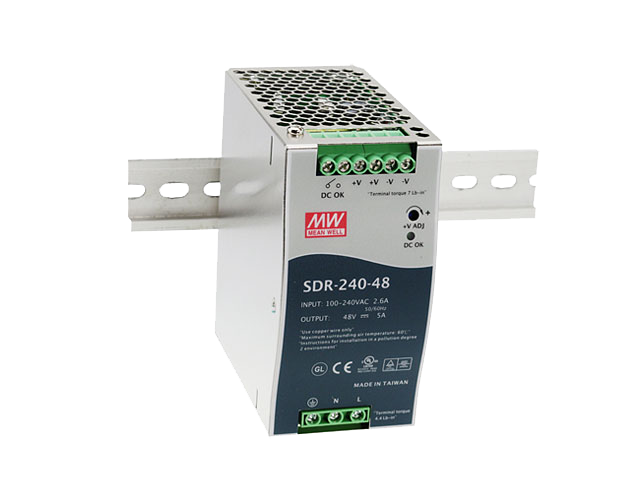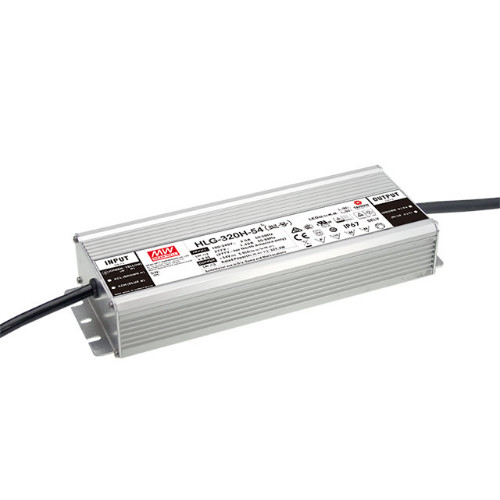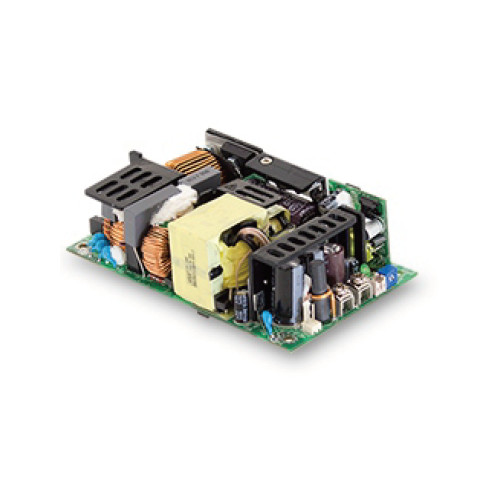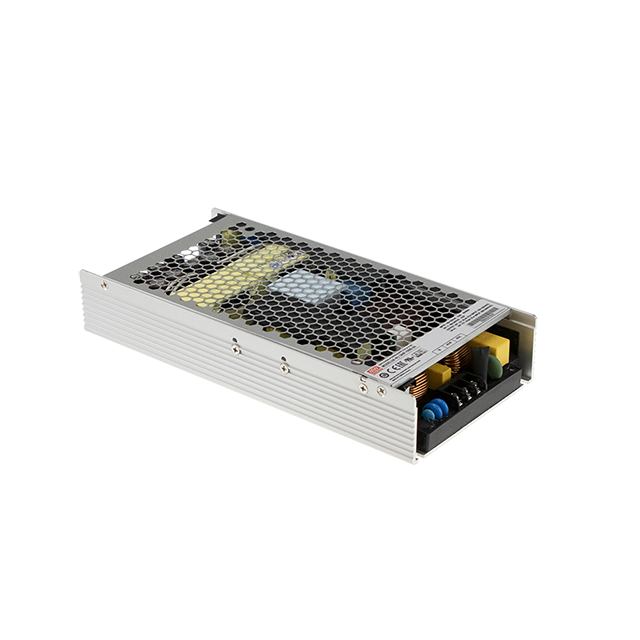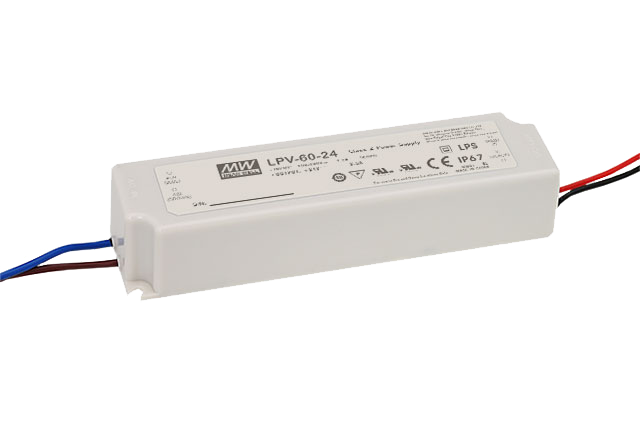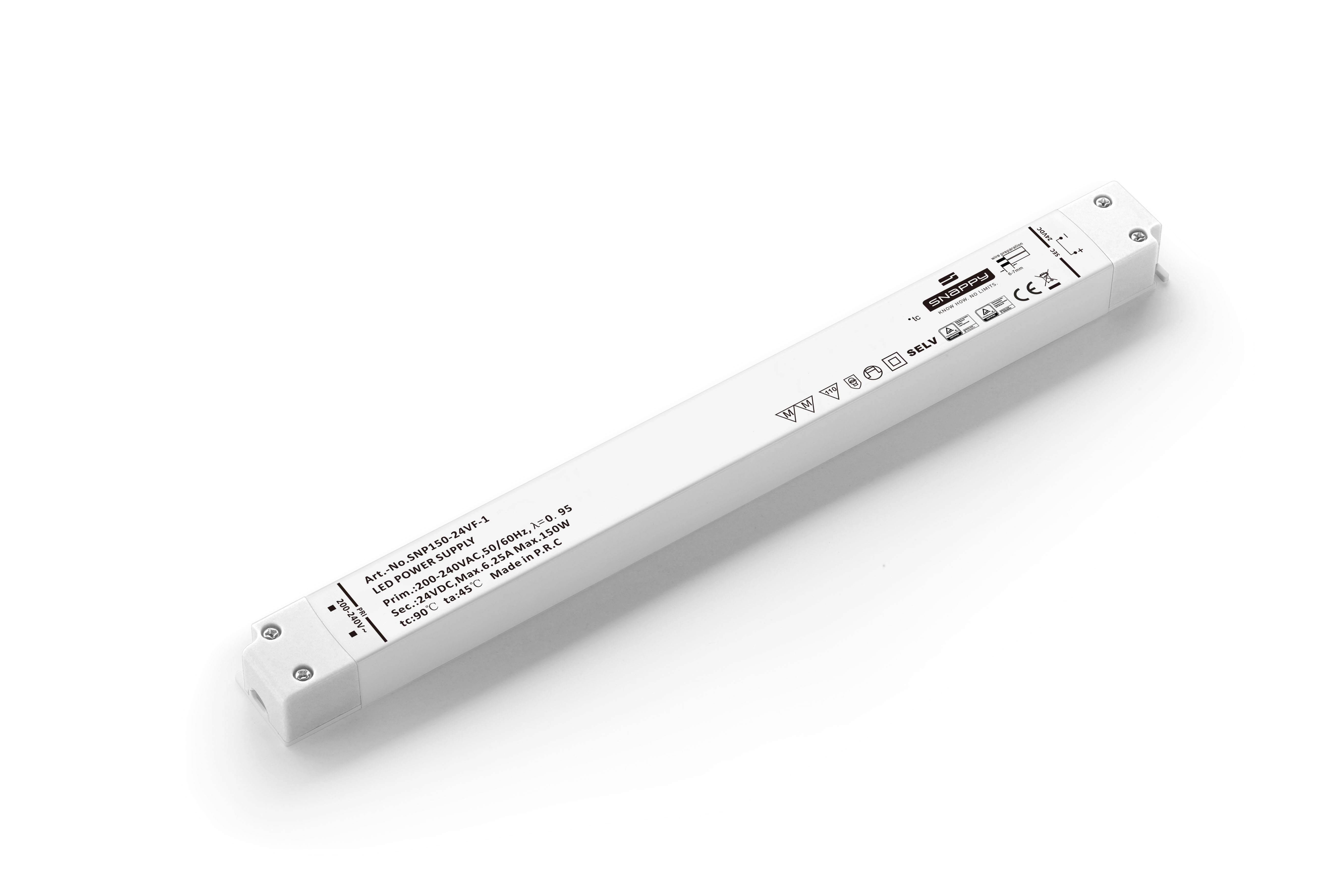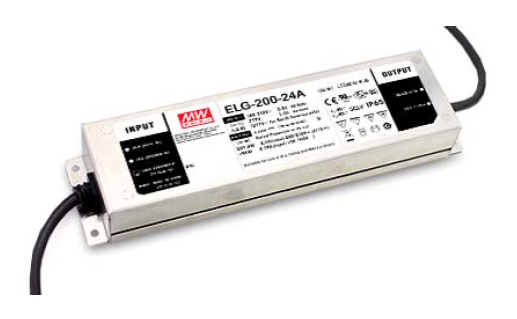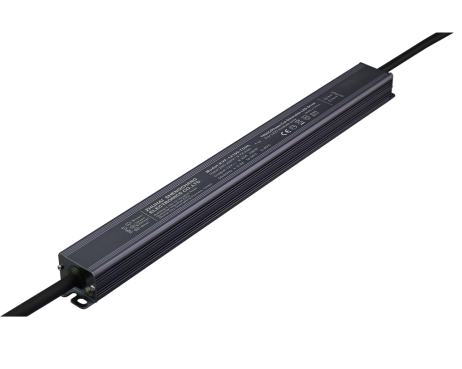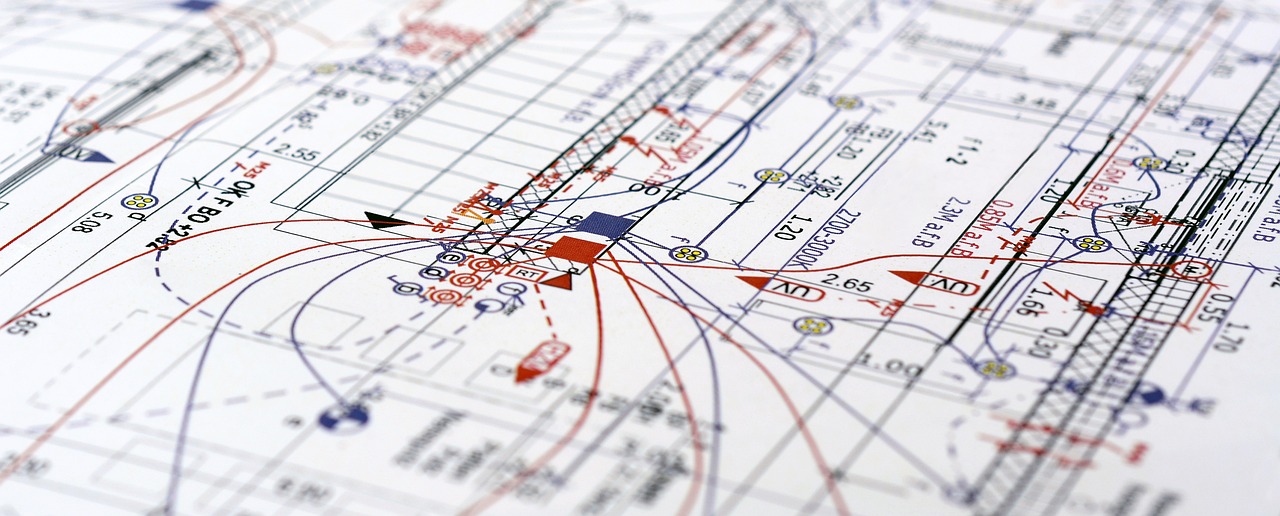
Everything you need to know about LED-Drivers
LED technology has revolutionized the lighting industry and is becoming increasingly widely used in various applications. But what is an LED driver and why is it so important? This article will provide you with all the information you need about LED drivers. An LED driver is a device that controls the power supply to LED lights. It converts alternating current to direct current, ensuring that the LEDs run at the correct voltage and current. LEDs cannot function without a good driver. In this article, we'll take a look at the different types of LED drivers and help you choose the right one for your needs. We'll also discuss the most important things to consider when choosing.
What is an LED-Driver?
An LED driver controls the flow of power to LED lights. It converts alternating current to direct current and ensures the correct voltage and current for LEDs. LEDs need a suitable driver to function properly. Essentially, an LED driver is a control unit. It directs power from the source to the LEDs. The driver ensures that LEDs receive the correct voltage and current for optimal performance. An LED driver has several functions: It regulates the power supply, protects LEDs from excessive current or voltage, and ensures consistent brightness. The LED driver enables the efficient and reliable operation of LEDs.
Functions and Importance of an LED Driver
The LED driver performs several important tasks that LEDs need to function. It primarily regulates the voltage and current for the LEDs. This is important because too much current or voltage can damage LEDs. The LED driver also protects the LEDs. It prevents current and voltage spikes that could cause LEDs to fail prematurely. It also ensures consistent light by supplying the correct current to the LEDs. An LED driver is so important because it allows LEDs to shine longer and better. It supplies the LEDs with a steady current and protects them from excessive current or voltage. This makes LEDs more efficient and durable.
Types of LED Drivers
You can choose from several types of LED drivers, depending on your needs and how you plan to use them. Here's an overview of the most common LED driver types:
Constant current drivers: This type of driver supplies LEDs with a constant current, regardless of how the input voltage changes. They are ideal for applications that require consistent light output, such as streetlights.
Constant voltage drivers: This type of driver provides LEDs with a fixed voltage and allows multiple LEDs to be connected in series. People often use them to illuminate things like neon signs.
Dimmable drivers: These drivers allow you to change the brightness of the LEDs and dim them as needed. They are perfect for places where you need to control every light, such as at home or in the office.
Choosing the best LED driver depends on a few key factors. You need to think about what type of LEDs you're using, how much power they require, whether they should be dimmable, and how well they'll work with other lighting components.
Choosing the Right LED Driver
Choosing the right LED driver is crucial for optimal LED performance. Here are some important factors to consider when choosing the right driver:
- Wattage: Make sure the driver can deliver the required wattage for the LEDs. Check the driver's specifications to ensure it can provide the correct voltage and current for the LEDs.
- Efficiency: Pay attention to the driver's efficiency. An efficient driver efficiently converts electrical energy into light, minimizing energy loss. Look for drivers with high efficiency to save energy and extend the lifespan of the LEDs.
- Dimmability: If you want to adjust the brightness of the LEDs, choose a dimmable driver. Make sure the driver is compatible with the desired dimming technology, such as 0-10V, PWM, or DALI.
- Compatibility: Check the driver's compatibility with other lighting components, such as dimmers or control systems. Make sure the driver works seamlessly with the other components to ensure the smooth functioning of the entire lighting system. Selecting the right LED driver can be complex, but it's worth the time to ensure your lighting system functions optimally and delivers the desired results.
Installing and Wiring an LED Driver
Setting up and connecting an LED driver is fairly simple, but you will need some basic knowledge of electricity. Here's a simple guide to setting up and wiring an LED driver:
Turn off the power: Before you begin, make sure you have turned off the power. This ensures your safety and prevents damage to the components. Choose the right location: Find a good place for the LED driver where it is protected from water, dust, and excessive heat. Always follow the manufacturer's instructions for placement.
Connect: Connect the LED driver's input components to the power source. Double-check that you have connected everything correctly and that everything is secure. Follow the manufacturer's instructions regarding wiring. Connect the output connections: Connect the LED driver's output connections to the LEDs. Make sure the connections are tight and not loose. Double-check the positive and negative ends to connect the LEDs correctly. Inspect the wiring: Review the wiring for any errors or places where wires are touching where they shouldn't. Make sure all connections are tight and not touching any other parts.
Turn on the power: Turn on the power and check if the LEDs are lighting up as intended. Check how bright they are and how much light they emit to make sure everything is working as planned. Remember to follow the manufacturer's instructions for setting up and wiring the LED driver. This will ensure everything works and prevent things from breaking or injuring yourself. Tips for Using an LED Driver Efficiently Using a good LED driver can help your LEDs last longer and reduce energy consumption.
Here are some tips to get the most out of your LED driver:
Choose a driver that doesn't waste energy: Opt for one that's at least 85% efficient or better. This will keep energy consumption low and extend your LEDs' lifespan.
Change the brightness: Turn the LEDs down when you don't need as much light. This saves energy and extends your LEDs' lifespan. Make sure you get a driver that can dim and works with the dimming technology you plan to use.
Monitor: Check your LEDs and driver. Look for signs that it's overheating or overworking, and fix any problems you discover.
Clean your driver: Make sure your driver stays clean and dust-free. Frequent cleaning can help dissipate heat better and achieve optimal performance.
Follow the manufacturer's guidelines: Follow the manufacturer's instructions for driver use and care. Don't overdo it and ensure it has adequate ventilation.
Using a good LED driver will significantly contribute to your LEDs lasting longer and performing better. Following these tips will help you save energy and get more out of your lighting.
Important Technical Specifications of an LED Driver
There are certain technical specifications to consider when selecting an LED driver. Here are some important technical specifications to look for:
- Output Voltage: Make sure the driver's output voltage matches the LED requirements. Check the driver's specifications to ensure it can deliver the correct voltage. Output Current: Check the driver's output current to ensure it meets the LED requirements. Make sure the driver can deliver the required current to power the LEDs optimally.
- Dimmability: If you require dimmable lighting, make sure the driver supports the desired dimming technology. Check the driver's compatibility with the dimmers or control systems you use.
- Efficiency: Pay attention to the driver's efficiency. An efficient driver efficiently converts electrical energy into light and minimizes energy loss. Look for drivers with high efficiency to save energy and extend the lifespan of the LEDs.
- Protection features: Check if the driver has protection features such as overcurrent protection, overvoltage protection, and temperature protection. These features can help protect the LEDs from damage and ensure the safety of the system. It is important to carefully review the technical specifications of the LED driver and ensure that it meets the requirements of your application. Careful selection and testing can help ensure that your lighting system functions optimally and delivers the desired results.
- Energy Efficiency: LED drivers are generally significantly more energy-efficient than conventional lighting technologies such as incandescent or fluorescent lamps. They convert electrical energy into light more efficiently, minimizing energy loss.
- Longer Lifespan: LEDs have a much longer lifespan than conventional incandescent or fluorescent lamps. By using a suitable LED driver, you can further extend the lifespan of the LEDs and reduce maintenance costs.
- Dimmability: LED drivers allow for precise dimming of the lighting, whereas conventional lighting technologies often offer only limited dimming options. This allows for individual control of the lighting and adaptation to different needs.
- Environmental Friendliness: LED drivers do not contain harmful substances such as mercury, which can be found in some conventional fluorescent lamps. They are therefore more environmentally friendly and easier to dispose of.
- Design flexibility: LEDs offer great design flexibility and can be manufactured in a variety of shapes and sizes. With a suitable LED driver, you can customize the LEDs to your individual needs and preferences. Using LED drivers offers a variety of advantages over conventional lighting technologies. You can save energy, extend the lifespan of LEDs, and customize the lighting to achieve better light quality and efficiency.
It's important to carefully review the technical specifications of the LED driver and ensure it meets the requirements of your application. Careful selection and testing can help ensure your lighting system performs optimally and delivers the desired results.
LED Drivers vs. Conventional Lighting Technologies
LED drivers offer several advantages over conventional lighting technologies. Here are some of the key differences between LED drivers and conventional lighting technologies:
- Energy Efficiency: LED drivers are generally significantly more energy-efficient than conventional lighting technologies such as incandescent or fluorescent lamps. They convert electrical energy into light more efficiently, minimizing energy loss. Longer Lifespan: LEDs have a much longer lifespan than conventional incandescent or fluorescent lamps. By using a suitable LED driver, you can further extend the lifespan of the LEDs and reduce maintenance costs.
- Dimmability: LED drivers allow for precise dimming of the lighting, whereas conventional lighting technologies often offer only limited dimming options. This allows for individual control of the lighting and adaptation to different needs.
- Environmental Friendliness: LED drivers do not contain harmful substances such as mercury, which can be found in some conventional fluorescent lamps. They are therefore more environmentally friendly and easier to dispose of.
- Design flexibility: LEDs offer great design flexibility and can be manufactured in a variety of shapes and sizes. With a suitable LED driver, you can customize the LEDs to your individual needs and preferences. Using LED drivers offers a variety of advantages over conventional lighting technologies. You can save energy, extend the lifespan of LEDs, and customize the lighting to achieve better light quality and efficiency.
Using LED drivers offers a variety of advantages over conventional lighting technologies. They can save energy, extend the lifespan of LEDs, and adjust lighting to achieve better light quality and efficiency.
Brands and Manufacturers of LED Drivers
Several companies produce and sell LED drivers. Here is a list of some well-known LED driver brands and manufacturers:
MEAN WELL: Mean Well is one of the world's leading manufacturers of LED drivers. They offer a wide selection of drivers for different uses and requirements.
Snappy: Snappy has developed a range of super-slim, full-size, linear, and waterproof LED drivers suitable for indoor and outdoor lighting applications.
SC Power: SC Power has specialized in the research and development and manufacture of dimmable LED drivers based on science and technology. LED drivers play a key role in ensuring LEDs perform optimally. They convert AC power to DC power, control voltage and current, protect LEDs from damage, and maintain consistent light output.
When choosing an LED driver, you need to consider its specifications, how well it performs, and whether it will fit with other lighting components. Selecting and installing the right driver can help LEDs last longer, reduce power consumption, and improve lighting performance. There are different types of LED drivers, including those that maintain constant current, those that maintain constant voltage, and those that allow dimming. Choose the driver that best suits your needs. There are many brands and manufacturers of LED drivers. Do your research and consider how well they perform and how reliable they are to select the best driver for your needs. Choosing the right LED drivers will help you get the most out of your LED lights and enjoy all the benefits of this energy-saving lighting technology. Take your time when choosing, and you'll be satisfied with your first-class LED lighting.
Recommended LED Drivers:
SNP-150-24VF-1
or continue to our LED power supplies

